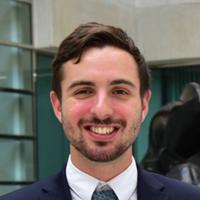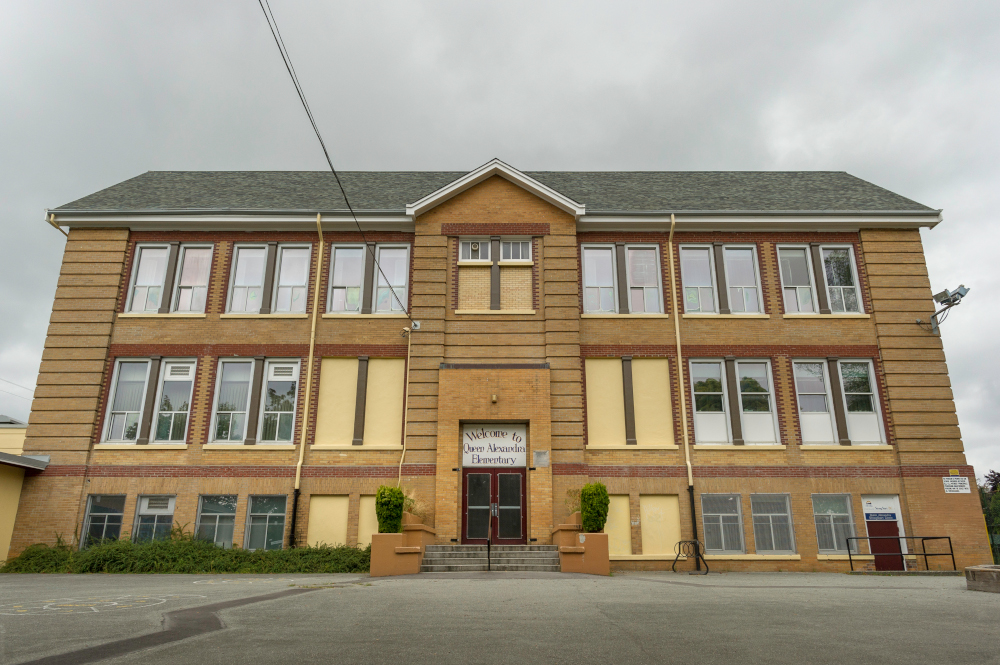Some Vancouver schools may once again be facing closure, and parents worry the district’s most vulnerable students will pay the price.
The Vancouver School Board (VSB) is under pressure to cut costs as it grapples with the need for seismic upgrades and updating aging schools.
That makes closing schools with low enrolment — many of which are already in need of repair — look like an obvious solution. A draft of the board’s Long Range Facilities Plan includes an analysis of 17 elementary schools and nine secondary schools with low enrolment and what the provincial government considers excess space, which could make them candidates for closure.
But many of those schools are in poorer neighbourhoods and meet community needs, which has some parents questioning if the district’s math on capacity adds up.
Disputed definitions
One example is Queen Alexandra Elementary School on East Broadway. Srinivas Murthy, whose two children attend it, was shocked to see that their school had been evaluated at only 62 per cent capacity by the Vancouver School Board.
About one-quarter of the students attending Queen Alexandra have a special needs designation, and the school has a sensory room, two resource rooms and a dedicated music room to help meet those students’ needs.
But under the school board’s plan these spaces are counted as surplus as they are not used for traditional classrooms.
Amber Woodward, a Parents Advisory Council member at Renfrew Elementary School, said that’s wrong.
“Schools aren’t necessarily just bums and seats... Those are really valuable spaces for a school community, and that they’re considered empty or unused space I think is unjust,” she said.
Murthy decided to conduct his own evaluation of Queen Alexandra. After he removed those spaces from the calculation, the school was at 102 per cent capacity.
Those guidelines have become the key point of contention. Parents from across the district argue current definitions don’t account for the things that make their schools hubs for growth and community.
School board trustee Jennifer Reddy said that after meeting with parents, it became clear data doesn’t tell the whole story.
“I think that micro level of detail is precisely what’s missing,” said Reddy. “The more you zoom out, the more you homogenize and the more you over-simplify.”
“There’s so many risks in trying to make policies that are more general, as opposed to understanding the nuances that be told with qualitative information,” she said.
At Queen Alexandra, for example, just under half of the students self-identify as Indigenous, noted Mei-ling Wiedmeyer, who is married to Murthy.
“These are families that I think have probably been moved and have benefitted from the programming that they have there and are there for a reason,” she said. “And I think it hasn’t been fully considered, the true impact that [closure] would have on these families.”
When schools close, she said, children from vulnerable backgrounds will be shuffled to schools that have classroom space, but not necessarily the same facilities and support systems.
According to data from Aaron Leung, former chair of the City of Vancouver’s family, children and youth advocacy committee, East Vancouver has a higher concentration of students with special needs designations and faces the highest number of school closures under the board’s current approach.
“We have found [Queen Alexandra] to be a really special and unique school community, and so I think that there are probably a lot of benefits to being there that are just not adequately captured in the language of the LRFP,” said Wiedmeyer. “It’s hard to see where the real people fit.”
The Ministry of Education appears to agree. In a recent letter to school boards, Education Minister Rob Fleming wrote that LRFPs should emphasize “analyzing changing demographics to neighbourhoods, and account for other important facility uses.”
The school board is now in the process of reconsidering the way it determines capacity. Last week, the facilities planning committee voted to recommend the board change utilization guidelines to exclude multipurpose rooms, resource spaces, gyms and other similar spaces in considering a school’s capacity. The board will consider the recommendation Monday.
But many parents are asking how we got here in the first place.
The real divide
While some schools struggle with under-enrolment, others have the opposite problem.
Lord Byng Secondary, for example, is at 107 per cent capacity, and King George, downtown, is at 126 per cent.
That means even as some schools face closure, others are considering how to reduce enrolment — and that raises questions about which schools, and communities, get priority.
In Vancouver, students can apply to schools outside their neighbourhood catchment area. But “cross-boundary” transfers could be deepening inequalities between schools.
“Schools are in a competitive situation, unfortunately, because kids are currency in a sense,” said former deputy minister of education Charles Ungerleider.
There are many reasons a student may go across boundaries, like being accepted into a competitive program or specialized mini school.
But research from Ee-Seul Yoon at the University of Manitoba found students who enrol in schools outside their catchment area tend to be from wealthier families, with the resources and time to transport their kids farther from home. That changes the composition of schools in their neighbourhood and increases their risk of closure.
Terry Stanway, second vice-president of the Vancouver Secondary Teachers’ Association, said that has happened in the school district.
“We went through quite a period where it seemed west side schools tended to be much fuller than the east side schools,” Stanway said. “Steps were taken to mitigate that, but I don’t think we ever accomplished the re-balancing.
”But it’s not as simple as east versus west: Vancouver Technical is on the east side and still has over 90 per cent enrolment.
The real divide, according to Yoon and Ungerleider, is between students who can go cross-boundary and those who can’t. Ungerleider says the quality of education in the district is strong across all its schools — but it’s not easy to convince parents.
“If I blindfolded you and took you around the city and took you in schools, you would say to me, ‘These schools are more the same than they are different,’” said Ungerleider. “But you can’t take parents, blindfold them and take them around.”
Murthy’s presentation at the board committee on the long range plan noted its own 2016 finding that “vulnerable students tend to have more difficulty with change and transitions... It will be important for trustees and the district to understand the potential ramifications and impact of school closure on vulnerable students and families.”
This has serious implications for closing schools that host students from vulnerable communities — like Queen Alexandra’s diverse range of students from low-income, special needs and Indigenous backgrounds.
A long time coming
On Monday, the Vancouver School Board will vote on whether the Long Range Facilities Plan should recommend schools for closure. But the tension is unlikely to go away anytime soon.
VSB chair Janet Fraser said it’s a complicated issue.
“There’s a lot of pieces that fit into it,” she said. “We have aging facilities. We have seismically unsafe facilities. We spend a lot of money on our maintenance. We want to get as much money in the classrooms as possible and not in the infrastructure.”
“How do you fit all those together?”
Sixteen out of 18 secondary schools — including every east side school — and 24 out of 77 elementary schools earned a “very poor” or “poor” rating in the 2018 facility condition index. Fixing that would cost taxpayers $751 million.
That’s one reason school closures have already been considered twice in the last decade — and why parents are growing increasingly hesitant to send their children to a school that may be closed in the next few years.
Shaun Kalley, chair of the Vancouver District Parent Advisory Council, said the issue creates uncertainty and stress for families and students.
“I think any discussion — like in 2010, like in 2016 — around school closures has enormous emotional consequences,” Kalley said. “You can talk to students at AR Lord, at Britannia, and they’re worried they’re going to be under this pressure for the next six months.”
“They don’t know what the future is going to look like for their kids.”
Many parents accept that some schools may have to close. But if it comes to that, they want it to at least be for the right reasons.
“It’s clear to me that they haven’t actually spent time getting to know the schools and how space is really used,” said Wiedmeyer. “And it just seems to me that if you were actually making a plan that was designed to serve the community for how it is now, you might want to do that.” ![]()
Read more: Education

















Tyee Commenting Guidelines
Comments that violate guidelines risk being deleted, and violations may result in a temporary or permanent user ban. Maintain the spirit of good conversation to stay in the discussion.
*Please note The Tyee is not a forum for spreading misinformation about COVID-19, denying its existence or minimizing its risk to public health.
Do:
Do not: